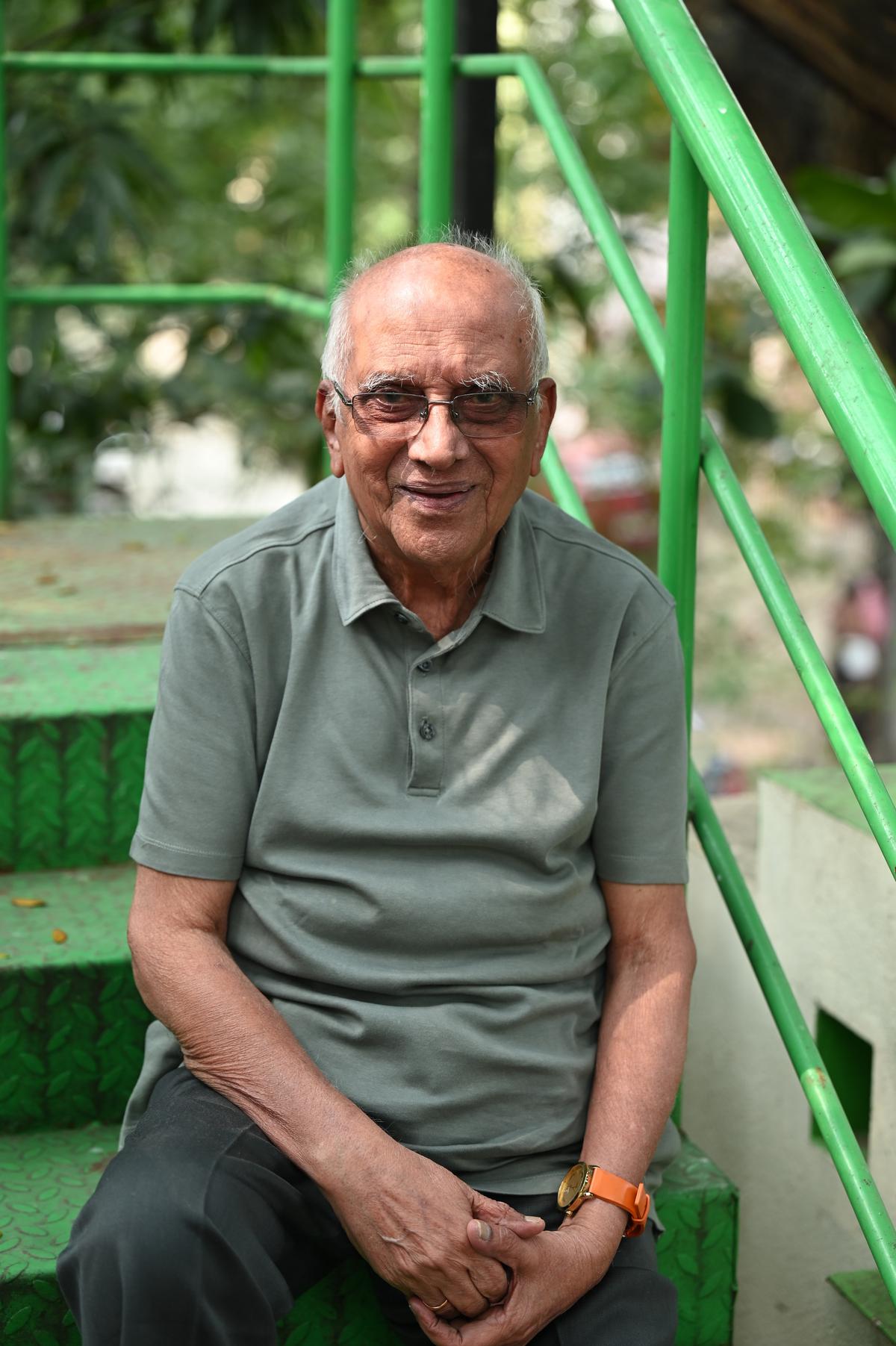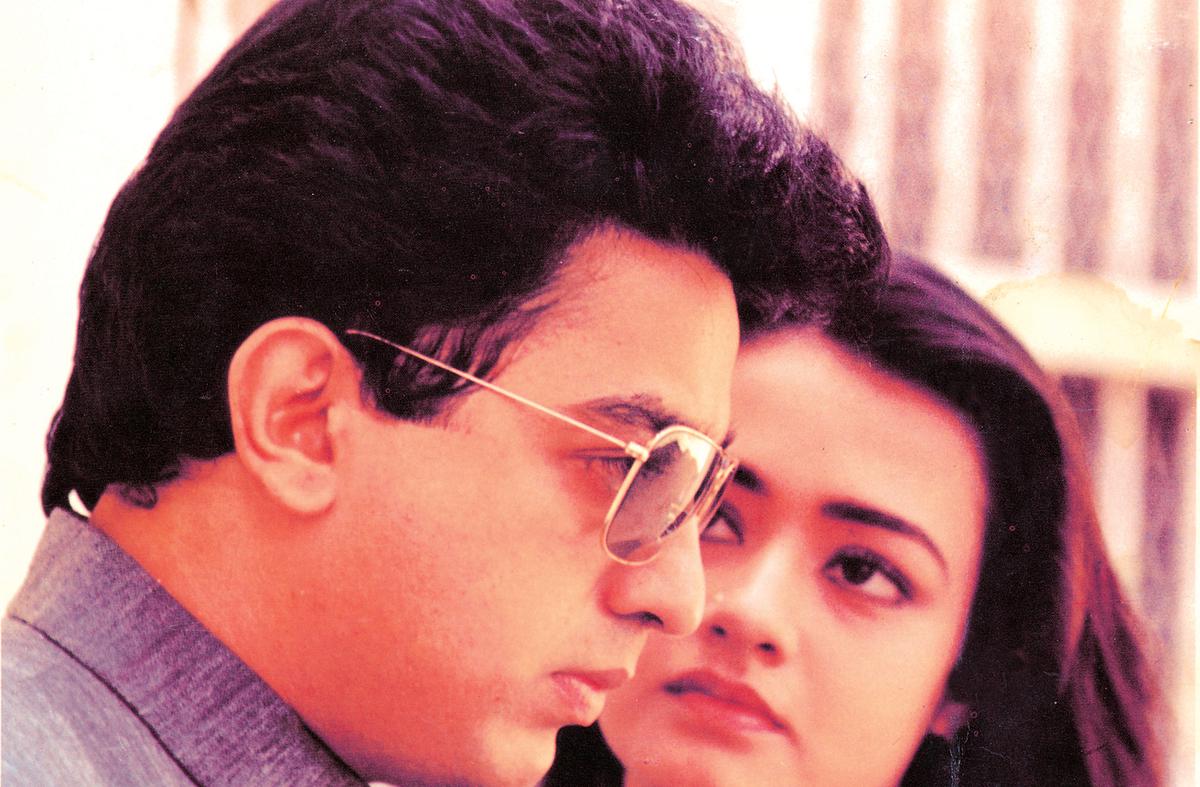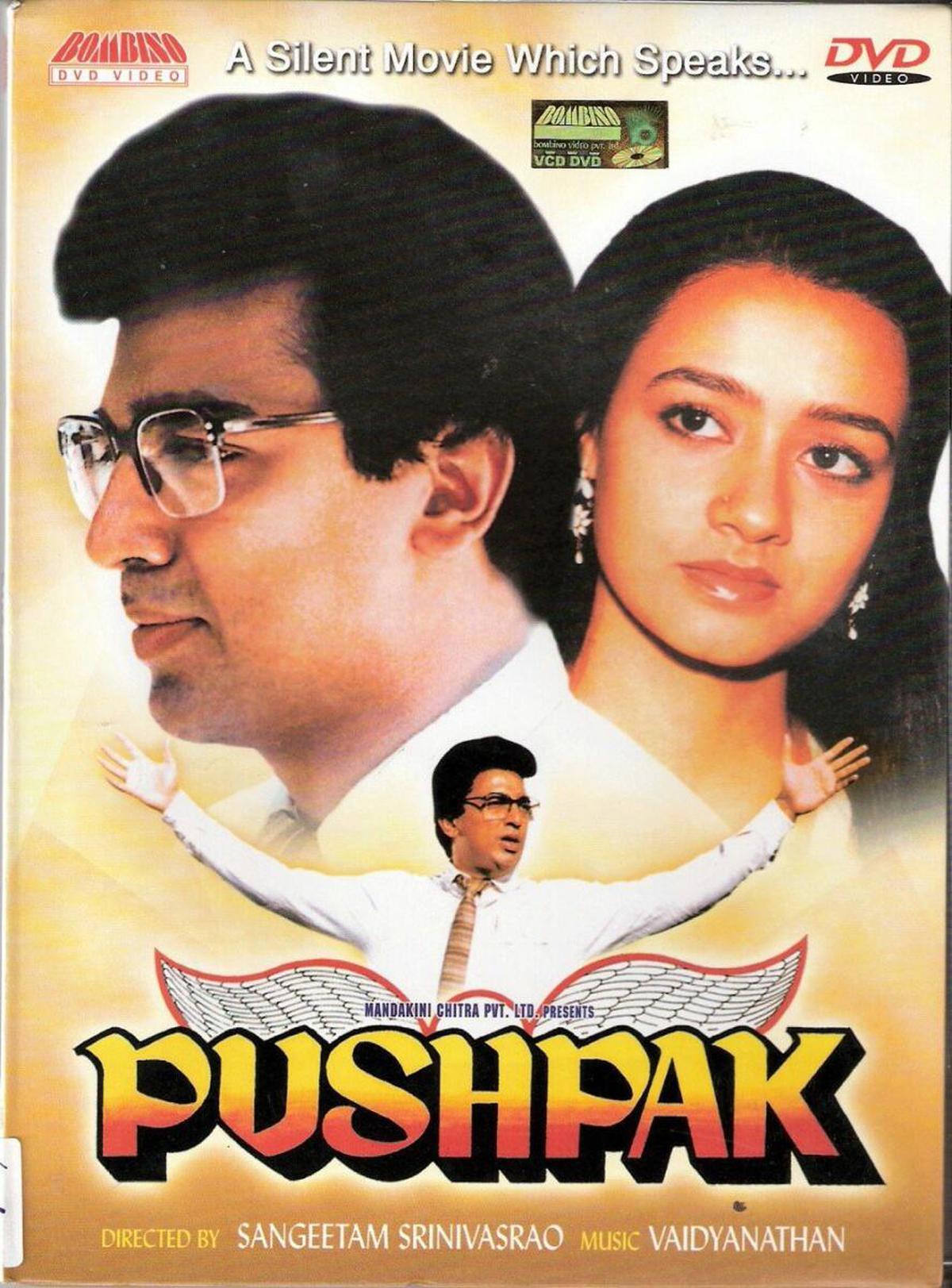An unemployed man gets ready for a potential job interview. He waits in a never-ending queue in front of a board that says, Temporary Vacancies. Bogged down by restlessness and poverty, he cuts the queue taking somebody else’s place, only to be pushed back to the fag end of the line. He repeats the same, when the man takes, rather, steals a wealthy person’s identity and decides to live a luxury life he never dreamt of.
There is comedy but also tragedy.
Thirty-five years ago, Singeetam Srinivasa Rao dared to dream what no Indian filmmaker could: to make a dialogue-less movie in Pushpak (1987) — the first Indian film to have come out without any dialogues after the silent era. As most people would assume and rightly so, it wasn’t courage that drove Singeetam. “It was a sort of madness,” he laughs, when we meet on a warm winter morning at his Chennai residence.
“Let’s say you tell a child not to go nearfire. But the child would want to touch and feel it. That thrill was there in me,” says Singeetam. Pushpak [starring Kamal Haasan and Amala Akkineni] was the fire.
Singeetam goes back a long way in cinema, starting out as a dialogue writer to filmmaker KV Reddy having assisted him in the landmark Telugu movie, Mayabazar (1957). He grew up on a steady diet of American and European cinema that have a rich history of silent era movies.
“That became the base for filmmaking for them. Whereas talkies became the base for us. We started making mythologies from stage plays. Those were not films but stage plays photographed on the screen. From then on, the culture of stage plays being photographed has been continuing for a long time,” laughs Singeetam, adding, “Only in Indian cinema is there a title called dialogue writer. Nowhere else.”

Singeetam Srinivasa Rao says he couldn’t have made ‘Pushpak’ without Kamal Haasan
| Photo Credit:
Johan Sathyadas
Singeetam would often come across people asking him why he made Pushpak without dialogues. “I ask them, ‘why should a person climb the Himalayas and hoist the national flag there? They can comfortably sit at home and have breakfast. Why take the trouble?’ Because it’s an achievement.”
The decades-long experience, now locked in his head as memories, tumble out like pearls, when the filmmaker speaks. Singeetam comes from a school that believed in maintaining silence, thereby cutting out cacophony on the film sets. It was not a choice, for, they used to shoot in Mitchell camera, which came with sync-sound.
“Actors would recite their dialogues and the recording was done on the set with a boom mic,” he recalls, adding, “We would rehearse before going for the take. This is how Mayabazar was shot. There was no concept of dubbing, except for a few patch works.”
A camera like Mitchell would have probably solved most of their logistical challenges in Pushpak. However, the camera was heavy and no longer in vogue. It was the dawn of Arriflex cameras. “When Arriflex came, movie making became easier. The camera is rolling, actors are speaking their lines, there is noise, and people are always talking on the sets.”
Singeetam shouted silence on Pushpak’s sets. “That was the difficult part,” he chuckles, “With that sort of discipline existing in the film industry back then, I came and shouted silence. But nobody was silent.”
For the sake of real ambience sound, the filmmaker decided to shoot the scenes twice. “Let’s say Kamal opens the fridge and chocolates fall out of it, we made Kamal do it another time just to capture the sound. It is difficult to recreate this natural sound,” he says.
The great tragedy
In the garb of a tragicomedy, Pushpak is about the crushing ironies that scream at you: faeces wrapped in a scented box; an unemployed youth with empty pockets feels jealous looking at a beggar and the wad of notes he possesses; an ice knife is the chosen weapon in what could be a cold-blooded murder; being a dialogue-less film, it was released as Pesum Padam (Talkie Picture) in Tamil.
Of all, the outrageous irony has got to be the romance between Kamal and Amala that blossoms at a memorial service; apparently it even left stalwarts like Satyajit Ray and Raj Kapoor dumbfounded.
“I have seen so many romantic films and have made so many myself. This is the first time I’m seeing a love scene around a dead body, wow,” Kapoor seemed to have remarked, when he once met Singeetam in Bangalore.

Kamal Haasan in the Tamil film ‘Pesum Padam’
| Photo Credit:
The Hindu Archives
There is a hint of the Marx Brothers in Singeetam’s writing, while the performances are heavily drawn from Charlie Chaplin, “Definitely there is an influence [on Chaplin]. Not just in me but Kamal too. You cannot escape that,” he says.
“Chaplin had to do it in 18 frames in the silent era. It looked a little unnatural because of that. We didn’t want it to be a silent film. The screenplay was worked in such a way that there was no necessity for dialogue. Supposing there was a place for dialogue, like when the drunkard wants to talk, Kamal stuffs his mouth with a piece of cloth. That is why the acting and performances felt real.”
Pushpak was a culmination of so many interesting ideas that couldn’t make the cut in the final movie. For instance, Singeetam recalls a personal memory of the time a burglar tried to swindle his daughter’s handbag when they lived in T Nagar.
“My wife had gifted the bag to my daughter. It looked heavy on the outside. This guy put a pole into our room and stole the bag, only to be disappointed. My daughter had put in all the bus tickets, papers and little stones she had collected in the bag. But that purse is still a property for the thief at that point,” laughs Singeetam.
Singeetam had the visuals and overall design in mind; a lot, however, came together during the making. Like in the scene between Kamal and PL Narayana (who plays the beggar), it was the latter’s idea to open the sack filled with cash, in a dramatic manner.
“There are certain things I don’t believe in writing because life force won’t be there. If you write everything mechanically, it becomes a stage play. I wanted my actors to own it, only then there will be life force,” he says, “It was a big relief to have people like Kamal, Amala and Gowrishankar [cinematographer].”
For a dialogue-less movie, performances of the lead actors needed to be pure and remained vital in keeping the audience engaged, agrees Singeetam. One of the film’s now-iconic shots has Kamal and Amala interacting through hand gestures standing on the balcony of their respective suites.
Normally such shots of the actors are taken separately, where they imagine the other actor being present and acting. That was not the case in Pushpak. All actors were present all the time, whether they had a scene or not.
“When we were taking Kamal’s shot on the balcony, Amala was there on the opposite side doing her part of the acting and vice versa. They were basically acting and reacting,” he says.

Kamal and Amala in ‘Pushpak’
| Photo Credit:
The Hindu Archives
Singeetam does not like to talk too much about Kamal, the actor. “What more can I say about his acting? It’s like saying fish swim really well.”
But Amala was truly a find.
He first came to know of her through a Telugu film in which she was asked to recite dialogues in a melodramatic fashion. She is not that person, thought Singeetam.
“She had a sweet face and wonderful skin that when light fell on her cheeks, it would bounce off. I thought she was the best for a no-dialogue film. I wanted someone whose face looked fresh on screen — like Audrey Heburn in Roman Holiday.”
Turns out, Amala is right. She called Singeetam a “riot” in an interview. “Half his sentence would be laughter,” she said and you now get why.
Singeetam knew it was the performance that was going to stay. “I don’t believe in karma. But when so many things come together [for a film like Pushpak], I am forced to believe the karma theory,” he says.
Unusual twins
A young filmmaker or audience discovering Pushpak for the first time might perhaps deem it a “daring experiment”. Is that what Singeetam thought of it 35 years ago? “I thought it was the most commercial film,” he says, before breaking into a laugh.
“What is commercial? When you have a star like Kamal, it automatically becomes a commercial film; it doesn’t matter if it is made in Tamil or Telugu. Whereas a Kamalahasan film like Pushpak runs in all languages. Which is more commercial? A Tamil-language Kamal film or a no-language film with Kamal?”
It was 1987 when Kamal was at the height of superstardom. Pushpak was possible only because a star like him was ready to back the director, sharing equal enthusiasm and perhaps, madness too. “Is it possible to make a film about Hiranyakashipu without Ranga Rao? Can you make Mayabazar without Gatotkachan? Amitabh Bachchan is a superstar. But can you cast him as Krishna [one can only think of NTR]? Likewise, I couldn’t have made Pushpak or Apoorva Sagodharargal without Kamalahasan.”

A poster of ‘Pushpak’
| Photo Credit:
The Hindu Archives
Among the filmmakers he has worked with, Kamal Haasan deems Singeetam “the youngest”; you cannot help but agree with him. At 92, Singeetam exhibits a rare passion for cinema; and a childlike glee when he speaks, not necessarily about his movies — “The day I talk about myself is the day I will be irrelevant.”
His energy is contagious and he still brims with ideas; a 3D animated picture on the life of Indian biochemist Yellapragada Subbarow is in the works, informs Singeetam. A man who doesn’t romanticise past glories nor believes in looking back, the legendary filmmaker wants to make “the first graphic movie” by combining the idea of graphic novels and using cinema as a medium.
“What is this movie, you ask? I’ll tell you later. Let it be a suspense for now,” he chuckles.
Singeetam is not done yet.
Even when a personal tragedy struck him — the filmmaker lost his wife, Lakshmi Kalyani, earlier this year — Singeetam marched forward albeit slowly.
“It was a 60-year-long marriage,” he says, “My wife was always filled with positive thoughts. The first three days were difficult after losing her; I wasn’t myself. On the fourth day, it felt like she was telling me, ‘Singeetam, how long will you mourn for me? Go, work… make movies’.”
Stay connected with us on social media platform for instant update click here to join our Twitter, & Facebook
We are now on Telegram. Click here to join our channel (@TechiUpdate) and stay updated with the latest Technology headlines.
For all the latest Entertainment News Click Here
For the latest news and updates, follow us on Google News.
